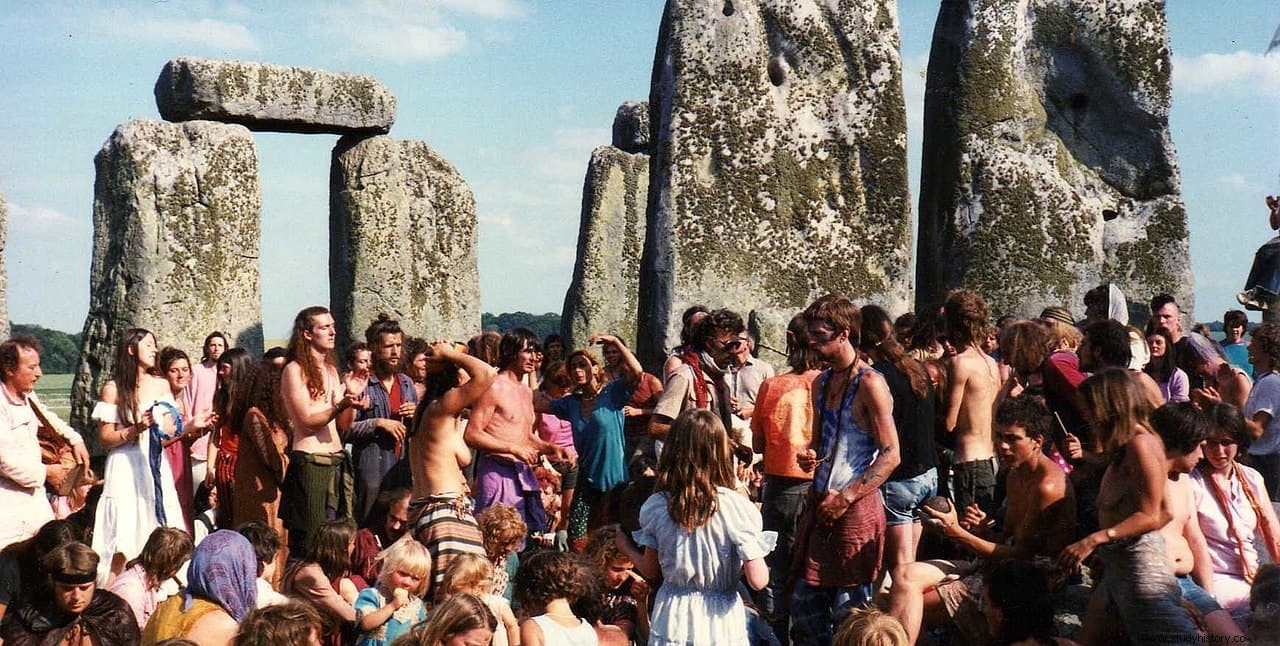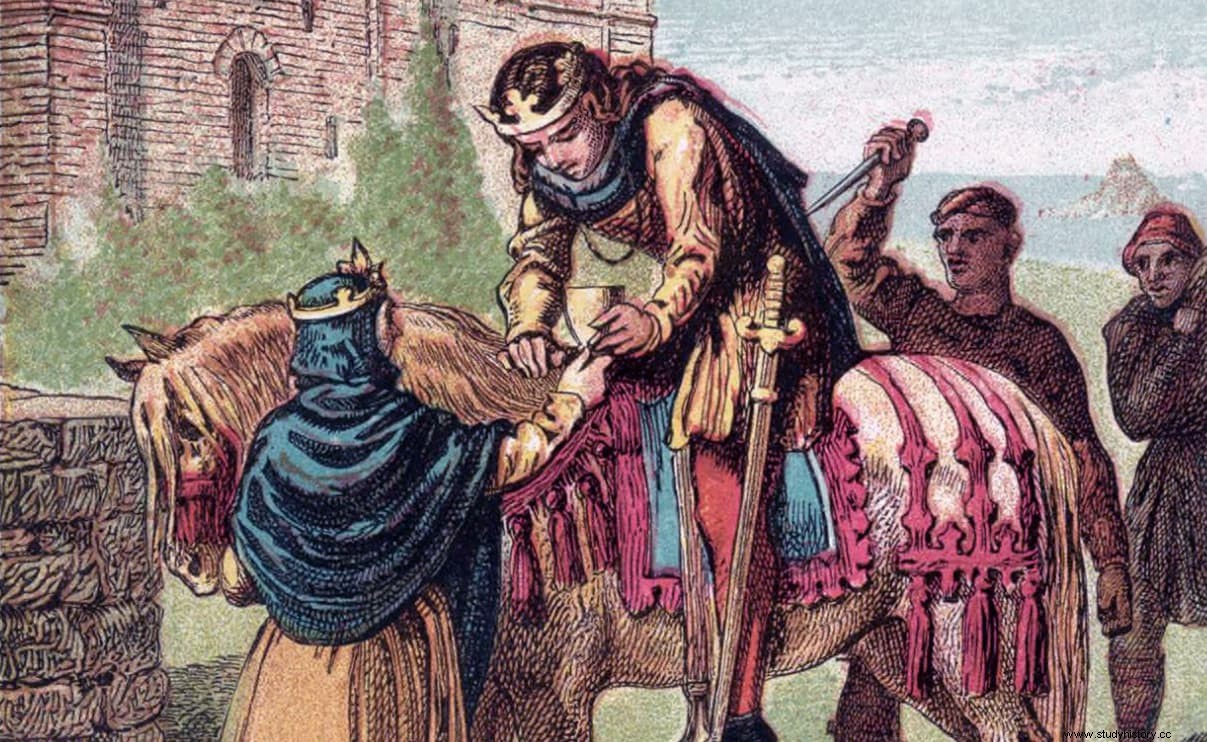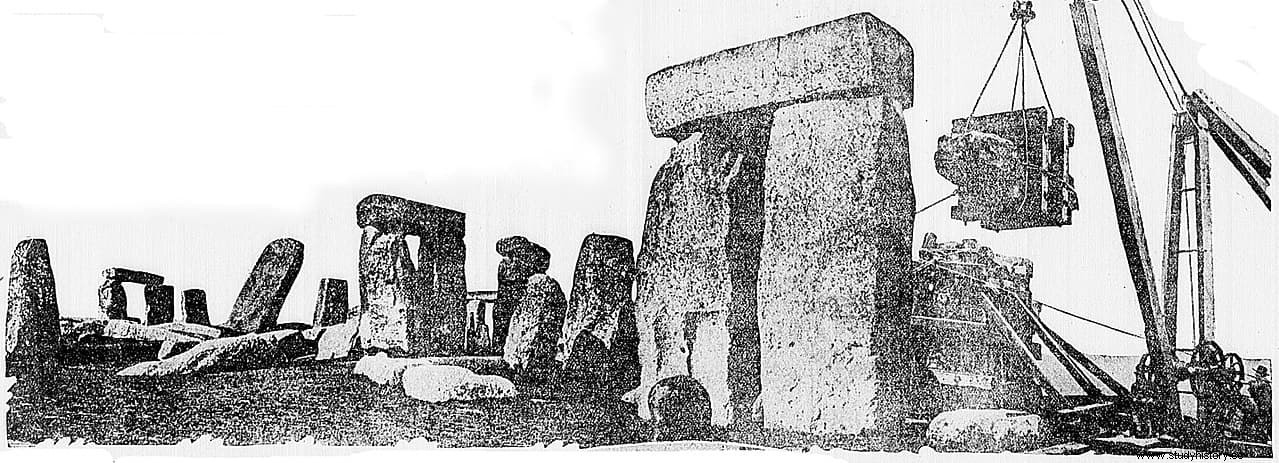Stonehenge is the most important prehistoric monument in England and, without a doubt, the most famous cromlech in the world. UNESCO incorporated it in 1986 to its list of World Heritage Sites, thus increasing the level of protection it had since a century before, when it was declared a Scheduled Monument , classification used in the United Kingdom for outstanding archaeological or historical sites.
Therefore, the place belongs to the Crown and depends on English Heritage, the institution equivalent to our National Heritage. But it was not always like this; there was a time when it was privately owned.
Let's go by parts. A cromlech is a set of menhirs, stones placed vertically, which are arranged in a circular way; in fact, in English the word ring is used (ring) to designate this type of megalithic construction. Each Stonehenge menhir measures between four and seven meters high by about two wide, weighing between twenty-five and fifty tons.

In reality, it is not a single circle but four concentric ones, probably the result of successive enlargements, with the blocks, which are made of dolerite, in the form of trilithons (that is, lintels:two vertical ones supporting a horizontal one between them) and assembled by means of the tongue-and-groove technique (like puzzle pieces). In the center was the so-called Altar Stone, whose purpose is confusing. The set measures one hundred and ten meters in diameter and was surrounded by a moat, saved by a processional causeway of three kilometers.
Stonehenge is located about two miles west of Amesbury, Wiltshire (near Salisbury). It was built in the late Neolithic, more than five thousand years ago with stones brought from Wales using the River Avon. The technical limitations - the wheel was probably not yet known - meant that the works lasted a long time, perhaps a millennium and a half. This makes it doubtful whether it always looked the same and, in fact, Mesolithic wells dating from around 8,000 BC have been found underneath.

It is not the only lack of certainty, because its use is not clear either:if in the past it was spoken of as a ceremonial center, the orientation of its axes to the summer solstice makes us think today of an astronomical observatory or a calendrical character. But the existence of burials in its surroundings suggests that a funerary function should also be added and it should not be forgotten that the aforementioned avenue connected it with another nearby cromlech, that of Woodhenge (of which there are hardly any remains because, as its name indicates, it was of wood).
For a long time, Stonehenge excited people's imaginations. They attributed healing properties to it, it was related to the Druids and identified with numerous legends, including those of the Arthurian cycle, adjudged its construction to the magician Merlin.
In a certain way, today that mysterious tone has been recovered by the hand of neopaganism and other New Age movements (an annual festival was even held in the seventies and first half of the eighties), ignoring the information from archaeologists that Druidism It is much later than the Neolithic.

What interests us here is another historical peculiarity of the site:its property. In the Middle Ages, which was when the domain over the land was documented, that area was within the domains of Amesbury Abbey, a Benedictine convent founded by Queen Elfrida around 979 AD. to take the robes as a way to atone for her involvement in the murder of her stepson Edward, who the king had had with a previous wife. The abbey was dissolved by Henry II in 1177, being replaced by a priory that lasted until the suppression of the monasteries ordered by Henry VIII.
The land remained in the hands of the Crown, who gave it to the Earl of Hertford, nephew of Jane Seymour (the monarch's third wife). Over the following centuries it would change hands several times:first Lord Carleton, then the Marquess of Queensberry and then Baronet Antrobus, who acquired it in 1824 and kept it until 1915, when he put it up for auction at the Knight Frank real estate agency. &Rutley. The buyer was Cecil Chubb, who paid six thousand six hundred pounds for those thirty acres in which, in addition to the cromlech, there was a Royal Flying Corps aerodrome-school, the antecedent of the RAF (Royal Air Force).

Cecil Herbert Edward Chubb was born in 1876 in Schrewton, a neighboring town less than six miles from Amesbury. He was the son of a saddler who was able to afford him a careful education, although he helped by working as a teacher since he was a teenager. Thanks to this mutual effort, he was able to enroll at the University of Cambridge, where he did two degrees, Science and Law, dedicating himself professionally to the latter. Become a prestigious lawyer, he became rich enough to obtain the hand of Mary Bella Alice Finch, niece of the owner of Fisherton House, the Salisbury psychiatric hospital, which he ended up inheriting.
In 1924, the couple founded a management company, changed its name to Old Manor Hospital and introduced new treatments suited to the times, making the institution a European benchmark. As Chubb was the president of the company, he already had social prestige, which allowed him to assume the position of justice of the peace in Salisbury and increase his business with the raising of cattle, both cattle (cows shorthorn ) as equine (thoroughbreds of horse racing). By then he had already carried out what has really made him go down in history:participate in the aforementioned Antrobus auction and buy Stonehenge.
The legend says that he acquired it to give it to her wife (a variant of it attributes the idea to her) but, apparently, it is false; Not only was Mary not amused by the extravagance, but Chubb himself explained that he intended the new owner to be someone local. In fact, the ratification of this objective was evident three years later, when he decided to donate Stonehenge and its surroundings to the state. The corresponding document, signed in October 1918, specifies certain conditions such as free access for residents, mandatory maintenance or the prohibition of building in the surroundings of the monument.

As of 1920, to comply with the agreement, the state acquired the surrounding land, thus preventing buildings from being built nearby and demolishing those that already existed; only the roads were preserved. Excavation was also carried out - several pieces were found - and the monument was restored, something that had already begun two decades earlier; From then until now more works would be undertaken repeatedly. Stonehenge continues to give surprises from time to time and the last one occurred in 2014, when up to seventeen more megalithic complexes were discovered in an area of twelve square kilometers around it.
In the meantime, the generous donation earned Chubb a baronetcy by Prime Minister David Lloyd George; the heraldic motif that incorporated his granted coat of arms was a megalithic trilithon, of course. He died in 1930 of a heart condition.
